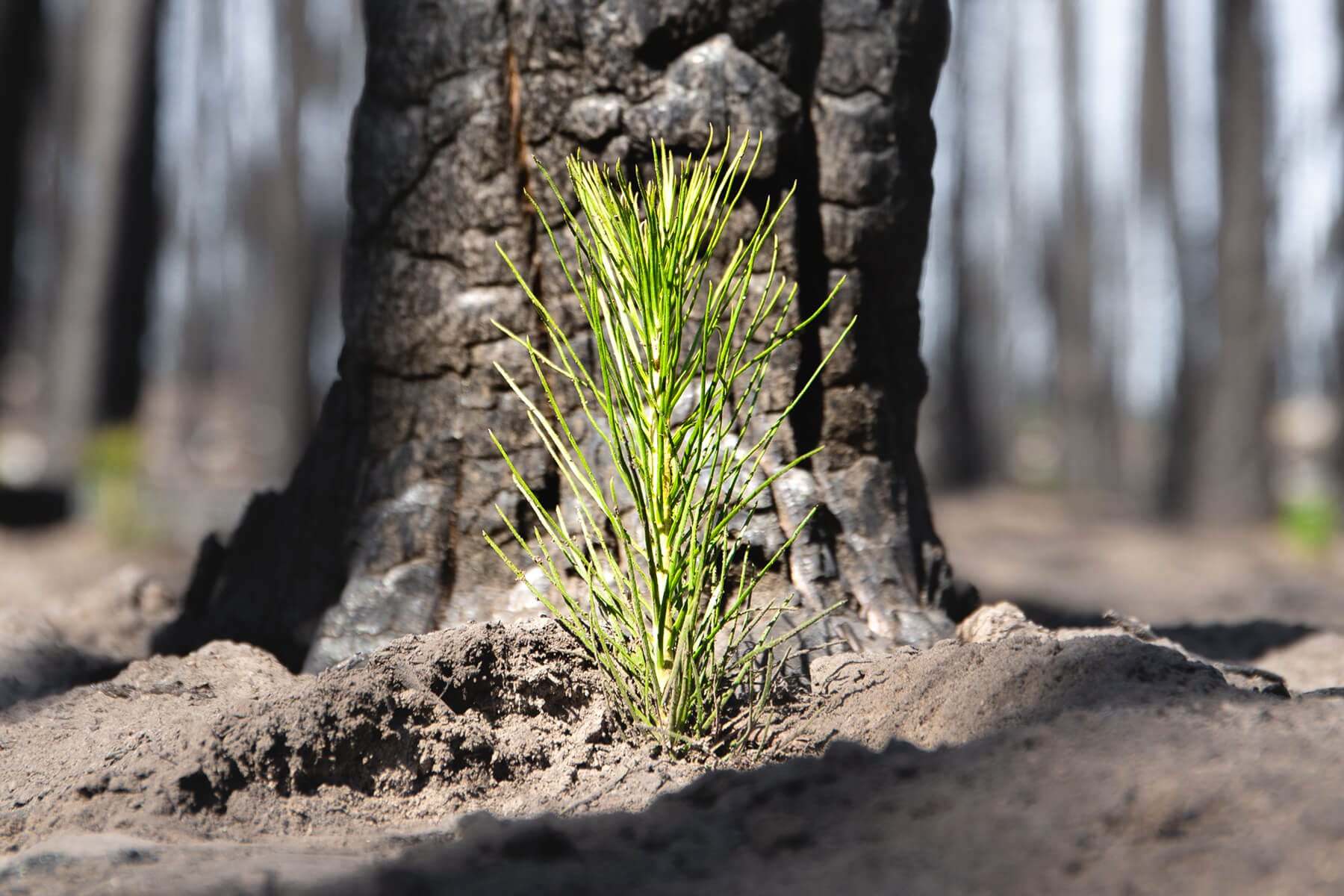

Wildfire Fund
Help Forests HealAfter Wildfires
Wildfires are growing larger, burning more intensely, and occurring in more areas every year—making it harder for nature to recover on its own. Your donation to the Wildfire Fund helps restore forests where natural regeneration isn’t possible, bringing back wildlife habitat, protecting vital ecosystem services, and building resilience against future challenges. Together, we can heal the land.
Forest Fire Stats
152M
Hectares
From 2001-2024, global tree cover loss from wildfire surpassed 152 million hectares.
Forest Fire Dashboard, Global Forest Watch
2X
More
Forest Fires now burn nearly two times more tree cover than 20 years ago.
45%
of Loss
In 2024, fires accounted for 45% of all tree cover loss—more than any other year in the last two decades.
Forest Fire Dashboard, Global Forest Watch
Why support the WildFire Fund?
Lorem ipsum dolor sit amet, consectetur adipisicing elit, sed do eiusmod tempor incididunt ut labore et dolore magna aliqua. Ut enim ad minim veniam, quis nostrud exercitation ullamco laboris nisi ut aliquip ex ea commodo consequat. Duis aute irure dolor in reprehenderit in voluptate velit esse cillum dolore eu fugiat nulla pariatur.

Support Natural Regeneration
When fire destroys not just standing trees, but also burns through seeds beneath the soil, forests can’t recover on their own. In these areas, where fire has exceeded natural ecological processes, planting trees offers the best chance to heal the land.

Foster Ecosystem Resilience
Burn scars (the charred land left behind after a wildfire) are highly vulnerable to future challenges, such as colonization by invasive species, insect and disease outbreaks, flooding and soil erosion, and future fires. Planting trees helps stabilize the soil, restore ecological balance, and ensure the eventual return of healthy, biodiverse forest.

Restore Wildlife
Habitat
Today, animal and plant communities are more exposed to high-severity fires than ever before. These catastrophic events can result in extensive habitat loss for wildlife—including many threatened and endangered species. Reforestation facilitates the regeneration of multilayered habitat that can support a variety of life.

Support Natural Regeneration
When fire destroys not just standing trees, but also burns through seeds beneath the soil, forests can’t recover on their own. In these areas, where fire has exceeded natural ecological processes, planting trees offers the best chance to heal the land.

Foster Ecosystem Resilience
Burn scars (the charred land left behind after a wildfire) are highly vulnerable to future challenges, such as colonization by invasive species, insect and disease outbreaks, flooding and soil erosion, and future fires. Planting trees helps stabilize the soil, restore ecological balance, and ensure the eventual return of healthy, biodiverse forest.

Restore Wildlife
Habitat
Today, animal and plant communities are more exposed to high-severity fires than ever before. These catastrophic events can result in extensive habitat loss for wildlife—including many threatened and endangered species. Reforestation facilitates the regeneration of multilayered habitat that can support a variety of life.
Fire:A Growing Global Threat
Record-breaking fires are dramatically reducing air quality, straining water supplies, destroying critical habitat, and threatening communities around the world.

The road toForest Fire Recovery
One Tree Planted’s Wildfire Fund supports reforestation as part of active post-fire management strategies in areas where natural regeneration is not possible. In addition to facilitating healthy ecosystem recovery, planting trees reduces vulnerability to future disturbances like wildfires, insect infestations, and disease outbreaks.




